Recommendations for preservation of central venous access in children

Children with chronic illness often require prolonged or repeated venous access. They remain at high risk for venous catheter-related complications (high-risk patients), which largely derive from elective decisions during catheter insertion and continuing care. These complications result in progressive loss of the venous capital (patent and compliant venous pathways) necessary for delivery of life-preserving therapies” […]
Central venous catheter digital education tool to deliver instructions to parents

The goal was to investigate whether the use of a DVD education intervention reduced adverse complications and improved parent education for homecare management of CVADs for pediatric patients with cancer” Raybin et al (2019). Abstract: BACKGROUND: Research on parent understanding of homecare management of external central venous access devices (CVADs) for children with cancer is […]
Review of paediatricians who diagnose and manage cellulitis

There is a lack of evidence-based guidance for management of cellulitis and use of outpatient parenteral antimicrobial therapy (OPAT) in children” Ibrahim et al (2019). Abstract: There is a lack of evidence-based guidance for management of cellulitis and use of outpatient parenteral antimicrobial therapy (OPAT) in children. The only published guidelines for skin infections are […]
Chronic venous changes induced by central lines in children
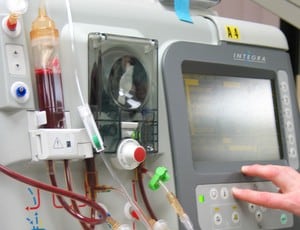
To explore the hypothesis that central venous stenosis/obstructions (CVS/O) in children are influenced by prior central venous access devices (CVADs) and are associated with future risk for thromboses” Gnannt et al (2019). Abstract: PURPOSE: To explore the hypothesis that central venous stenosis/obstructions (CVS/O) in children are influenced by prior central venous access devices (CVADs) and […]
Clinical impact of chronic venous changes induced by central lines in children

To explore the hypothesis that central venous stenosis/obstructions (CVS/O) in children are influenced by prior central venous access devices (CVADs) and are associated with future risk for thromboses” Gnannt et al 92019). Abstract: PURPOSE: To explore the hypothesis that central venous stenosis/obstructions (CVS/O) in children are influenced by prior central venous access devices (CVADs) and […]
Perioperative fluid management in children

Physiologically composed balanced isotonic electrolyte solutions are beneficial for maintaining homeostasis, shifting the status more towards the normal range in patients with preexisting imbalances and have a wide margin of safety in case of accidental hyperinfusion” Sümpelmann et al (2019). Abstract: PURPOSE OF REVIEW: The composition and type of intravenous fluids during paediatric anaesthesia have […]
Safety and effectiveness of hypodermoclysis for rehydrating children

The objective of this review is to summarize the published evidence regarding the effectiveness and safety of hypodermoclysis in comparison to intravenous fluid infusion for the rehydration of children with mild or moderate dehydration in hospital and home settings” Saganski and de Souza Freire (2019). Abstract: The objective of this review is to summarize the […]
Vascular access in children requiring maintenance haemodialysis

Here we present clinical practice recommendations for AVFs and CVLs in children with ESKD” Shroff et al (2019). Abstract: BACKGROUND: There are three principle forms of vascular access available for the treatment of children with end stage kidney disease (ESKD) by haemodialysis: tunnelled catheters placed in a central vein (central venous lines, CVLs), arteriovenous fistulas […]
OPAT for avoidance of hospitalisation in children
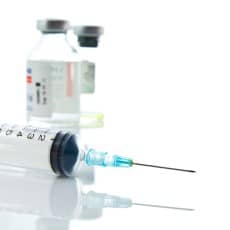
One area of increased focus for antimicrobial stewardship is outpatient parenteral antimicrobial therapy (OPAT)” Krah and Hersh (2019). Abstract: In an effort to combat antimicrobial overuse and resistance and improve patient outcomes, many paediatric hospitals have implemented antimicrobial stewardship programmes. The primary goal of these programmes is to ensure delivery of the appropriate antimicrobial at […]
Evidence-based practice regarding pediatric central venous catheters

This article highlights the key considerations, pitfalls and evidence-based practices regarding the use pediatric central venous catheters” Jamshidi (2019). Abstract: Central venous catheters (CVC) are commonplace in the management of critically ill patients and serve a variety of purposes. Venous access is important for the administration of fluid and medications as well as blood procurement […]
Central line-associated bloodstream infection among children listed for liver transplantation

There is substantial risk for CLABSI among children with BA listed for liver transplantation. No clinical, demographic, or laboratory factor we tested emerged as an independent predictor of CLABSI” Triggs et al (2019). Abstract: BACKGROUND: Pre-transplant nutrition is a key driver of outcomes following liver transplantation in children. Patients with biliary atresia (BA) may have […]
Role of implantable ports in children with haematological malignancies

Totally implantable chemoports are preferred in children with solid and hematological malignancies because of decreased pain, the rate of infection, and ability to maintain patency for the long term” Redkar et al (2019). Abstract: AIM: The aim of this retrospective analysis was to identify the variously related complications and to study preventive and therapeutic measures […]
Bloodstream infection in pediatric patients with intestinal failure and central venous catheters

We conducted a retrospective cohort study of febrile patients younger than 18 years with diagnosis of intestinal failure requiring a central venous catheter for home parenteral nutrition to identify factors associated with normal blood cultures to identify a low-risk subset” Fischer et al (2019). Abstract: OBJECTIVES: This study aimed to describe demographic, clinical, and laboratory […]
Oral 24% sucrose for pain control in healthy newborns receiving venipuncture

To test the hypothesis that oral administration of 24% sucrose associated with nonnutritive sucking in healthy newborns receiving venipuncture beyond the first week of life controls pain and pain-related variation in heart rate (HR) and noninvasive oxygen saturation (SpO2)” De Bernardo et al (2019). Abstract: OBJECTIVE: To test the hypothesis that oral administration of 24% […]
Central venous catheter outcomes in critically ill children

This data suggests that the femoral site may be an important risk factor that should be considered in prevention strategies for catheter-associated VTE in children” Derderian et al (2018). Abstract: BACKGROUND: Central venous catheters (CVC) are vital to the management of critically ill children. Despite efforts to minimize complications, central line associated bloodstream infection (CLABSI) […]
How to treat extravasation injuries in infants and young children

There is some uncertainty about which are most the promising treatments for extravasation injuries in infants and young children. Saline flush-out techniques and conservative management approaches are commonly used and may be suitable for evaluation in trials” Corbett et al (2019). Abstract: BACKGROUND: Extravasation injuries are caused by unintended leakages of fluids or medicines from […]
Efficacy and safety of EMLA in infants <3 months of age
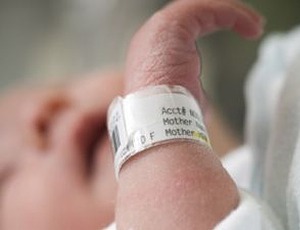
To determine the efficacy and safety of EMLA in infants
Serious complications of intraosseous access during infant resuscitation

We report on a 2.5-month-old infant with ischemia of the left leg and compartment following intraosseous needle application during resuscitation” Molacek et al (2018). Abstract: We report on a 2.5-month-old infant with ischemia of the left leg and compartment following intraosseous needle application during resuscitation. Unfortunately, this event led to major limb amputation. The cause, […]
Fluoroscopy-guided subclavian vein catheterization in children

Fluoroscopy-guided subclavian vein catheterization in children is a safe procedure, with a high success rate, resulting in a reduced number of venipunctures, optimal catheter placement, and reduced complications” Pang et al (2018). Abstract: Subclavian vein catheterization plays an important role in the treatment of children with hematologic disease. However, catheter placement is a difficult and […]
Robot-based distraction for venipuncture pain in children

We propose that interaction with a humanoid robot may effectively distract children during IVI thereby reducing their pain and distress” Ali et al (2018). Abstract: INTRODUCTION: Intravenous insertion (IVI) is a very common procedure in the emergency department (ED). IVI is often painful and stressful for both children and their families. Currently, distraction therapy is […]
Central catheter size for infants for continuous renal replacement therapy

The aim of this study was to characterize both the operating conditions and performance of three different central vascular catheters sizes (4F, 5F, and 7F) connected to two different extracorporeal blood circulation models (adult and pediatric)” Garzotto et al (2018). Abstract: OBJECTIVES: Renal replacement therapy in infants and small children is the treatment of choice […]
Safety of Peripherally Inserted Central Catheter use in OPAT for children

To determine the safety of peripherally inserted central catheter (PICC) use for delivery of outpatient parenteral antimicrobial therapy (PAT) in children discharged to rural or urban locales. We hypothesized that children from rural settings would experience higher complication rates” Beachum et al (2018). Abstract: OBJECTIVES: To determine the safety of peripherally inserted central catheter (PICC) […]
Development of paediatric OPAT services

There has been little detailed systematic consideration of the delivery, setting and outcomes of paediatric Outpatient Parenteral Antimicrobial Therapy (OPAT), although individual studies report that it is a safe and effective treatment” Carter et al (2018). Abstract: BACKGROUND: There has been little detailed systematic consideration of the delivery, setting and outcomes of paediatric Outpatient Parenteral […]
Different distraction techniques for children during venipuncture

Invasive procedures are important causes of pain and anxiety during hospitalization. This study aims to evaluate the effect of three different distraction methods on the pain and anxiety levels of children during venipuncture” Inan and Inal (2018). Abstract: OBJECTIVES: Invasive procedures are important causes of pain and anxiety during hospitalization. This study aims to evaluate […]
Safety of patient-controlled analgesia after surgery in children

Patient-controlled analgesia (PCA) is common practice for acute postoperative pain management. Postoperative PCA use decreases pain intensity and improves patient satisfaction when compared to non-PCA routes of medication administration” Ocay et al (2018). Abstract: Patient-controlled analgesia (PCA) is common practice for acute postoperative pain management. Postoperative PCA use decreases pain intensity and improves patient satisfaction […]
Natural history of asymptomatic central venous catheter-related thrombosis

Asymptomatic central venous catheter (CVC)-related thrombosis in children varies in incidence from 5-69%” Jones et al (2018). Abstract: Asymptomatic central venous catheter (CVC)-related thrombosis in children varies in incidence from 5-69%. The rate of acute and long-term complications, such as Post Thrombotic Syndrome (PTS), from asymptomatic CVC-related thrombosis is unknown. This paper reports the outcomes […]
Ultrasound guidance for pediatric central venous catheterization
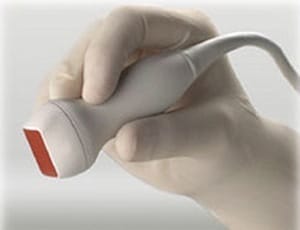
Ultrasound-guided techniques are associated with a reduced incidence of failures and inadvertent arterial punctures in pediatric central venous catheterization when compared with the anatomic landmark technique” de Souza et al (2018). Abstract: CONTEXT: Central venous catheterization is routinely required in patients who are critically ill, and it carries an associated morbidity. In pediatric patients, the […]
What is the optimal blood draw volume for children in clinical trials?
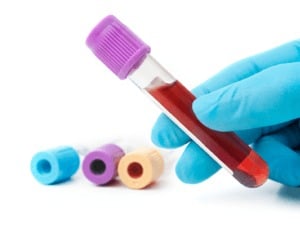
The aim of the study was to assess the safety of blood draws in children aged six months to 12 years targeting volumes of 3% of total blood volume” Peplow et al (2018). Abstract: AIM: Recommendations for maximum blood draw in children range from 1 to 5% despite limited evidence. The aim of the study […]
Meta-analysis of hospital-to-home interventions for children

Hospital-to-home transitions are critical opportunities to promote patient safety and high-quality care. However, such transitions are often fraught with difficulties associated with increased health care use and poor patient satisfaction” Hamline et al (2018). Abstract: CONTEXT: Hospital-to-home transitions are critical opportunities to promote patient safety and high-quality care. However, such transitions are often fraught with […]
Predictors of mortality in children with nosocomial bloodstream infection

An increased risk of death in children with nosocomial BSI can be identified by simple clinical predictors including malnutrition, admission to the PICU and use of a central line catheter” Murni et al (2018). Abstract: BACKGROUND: Nosocomial bloodstream infection (BSI) is associated with high mortality rates. Evaluating factors to predict mortality is important for prevention […]

